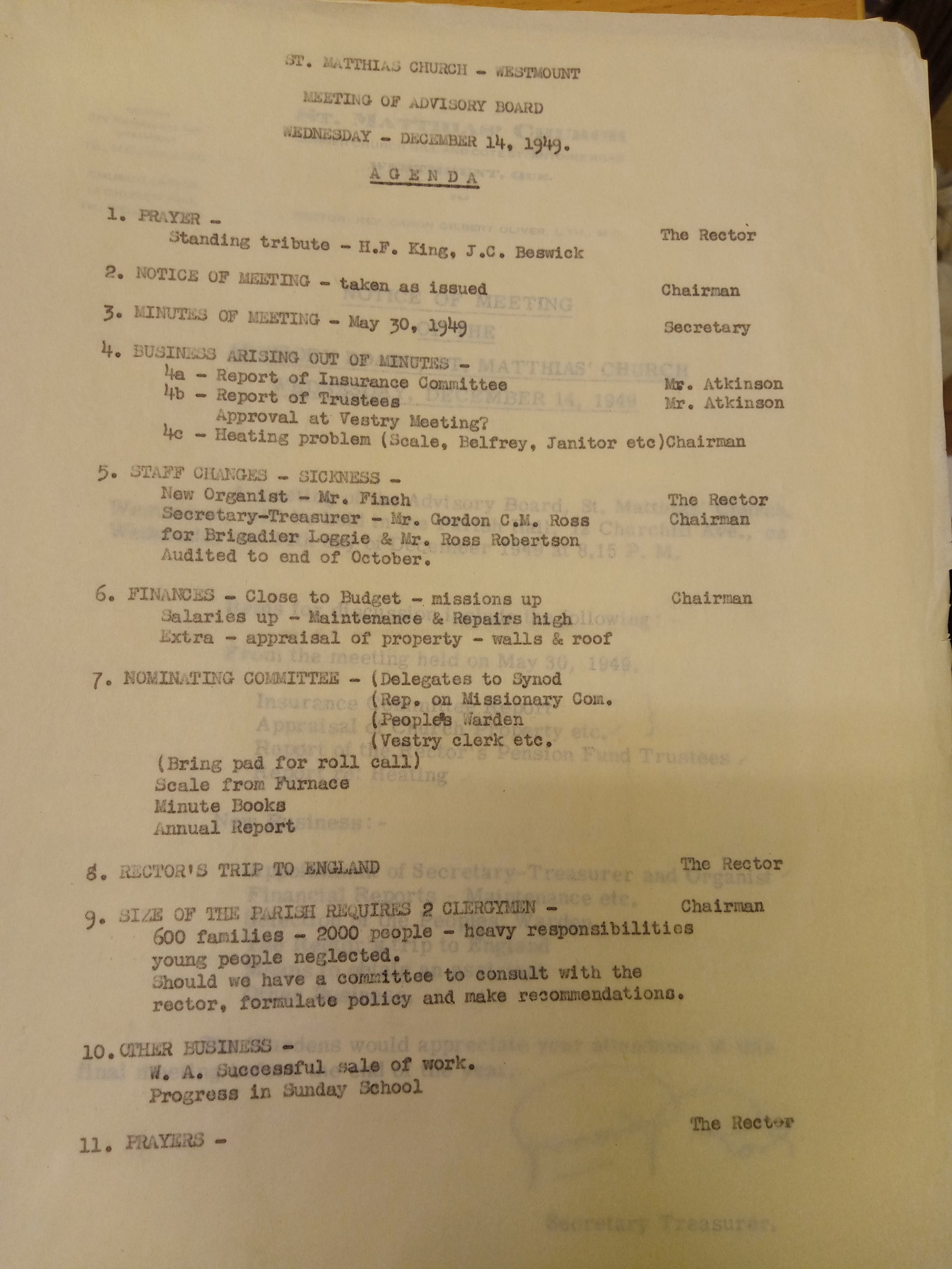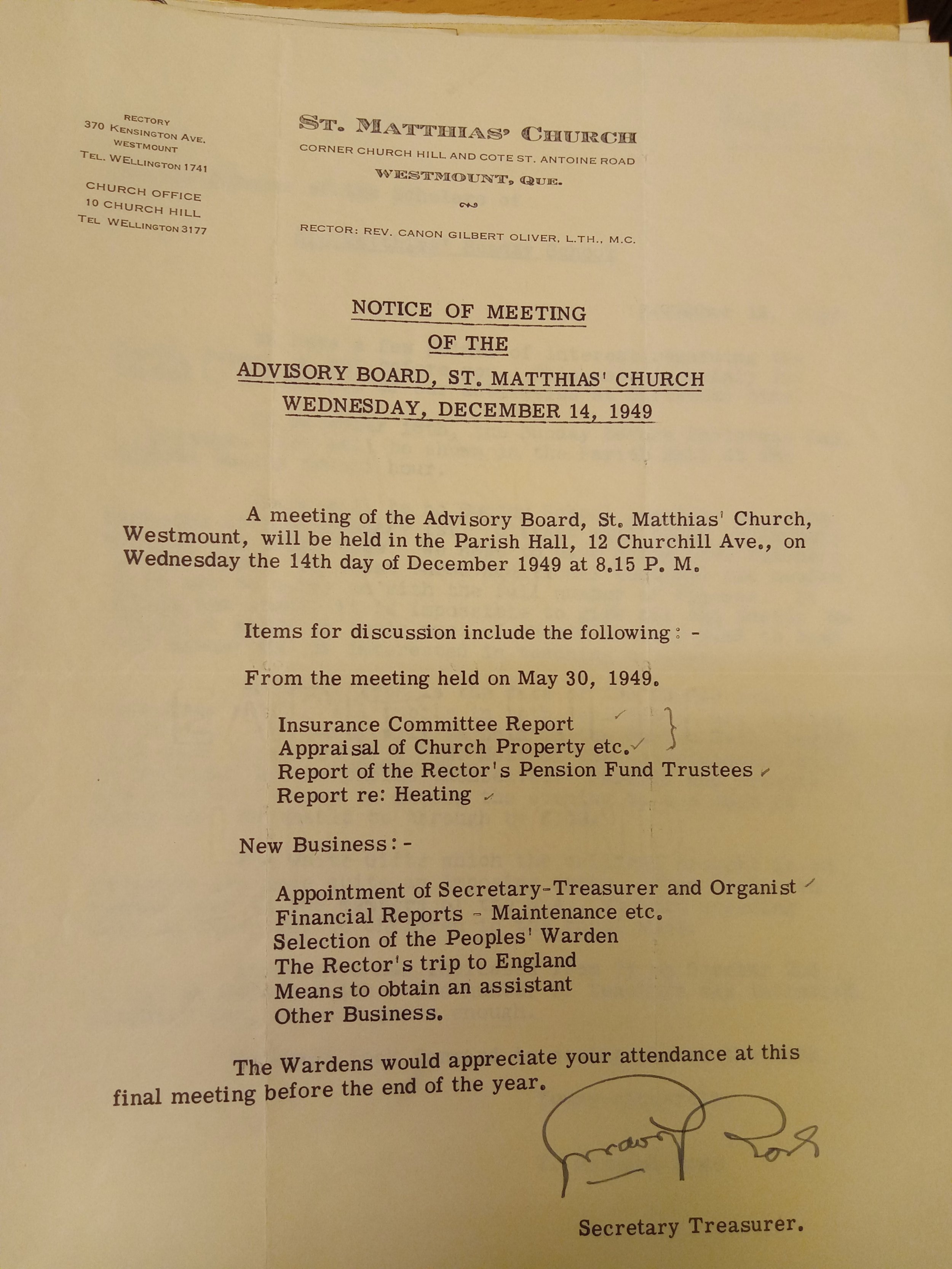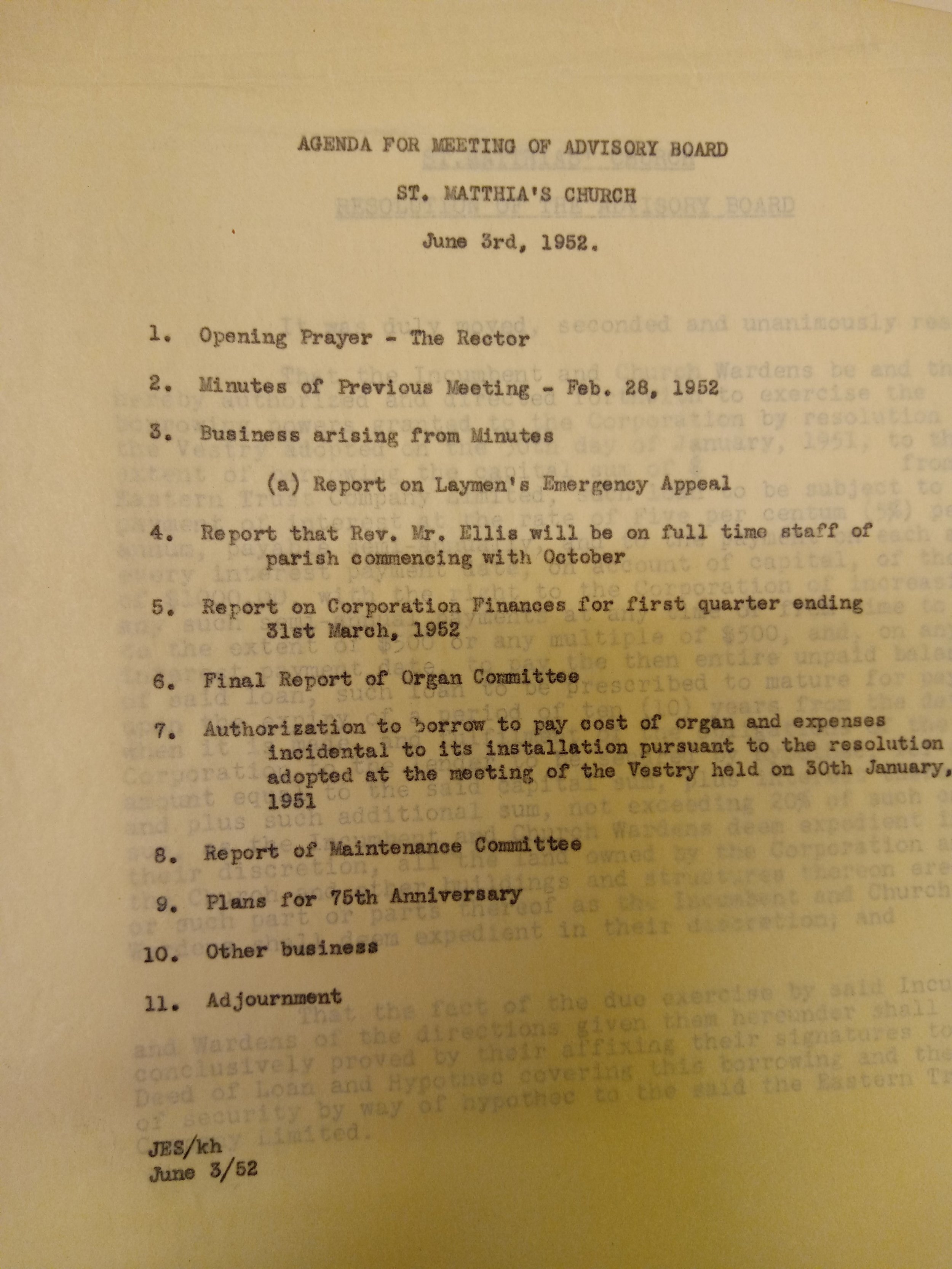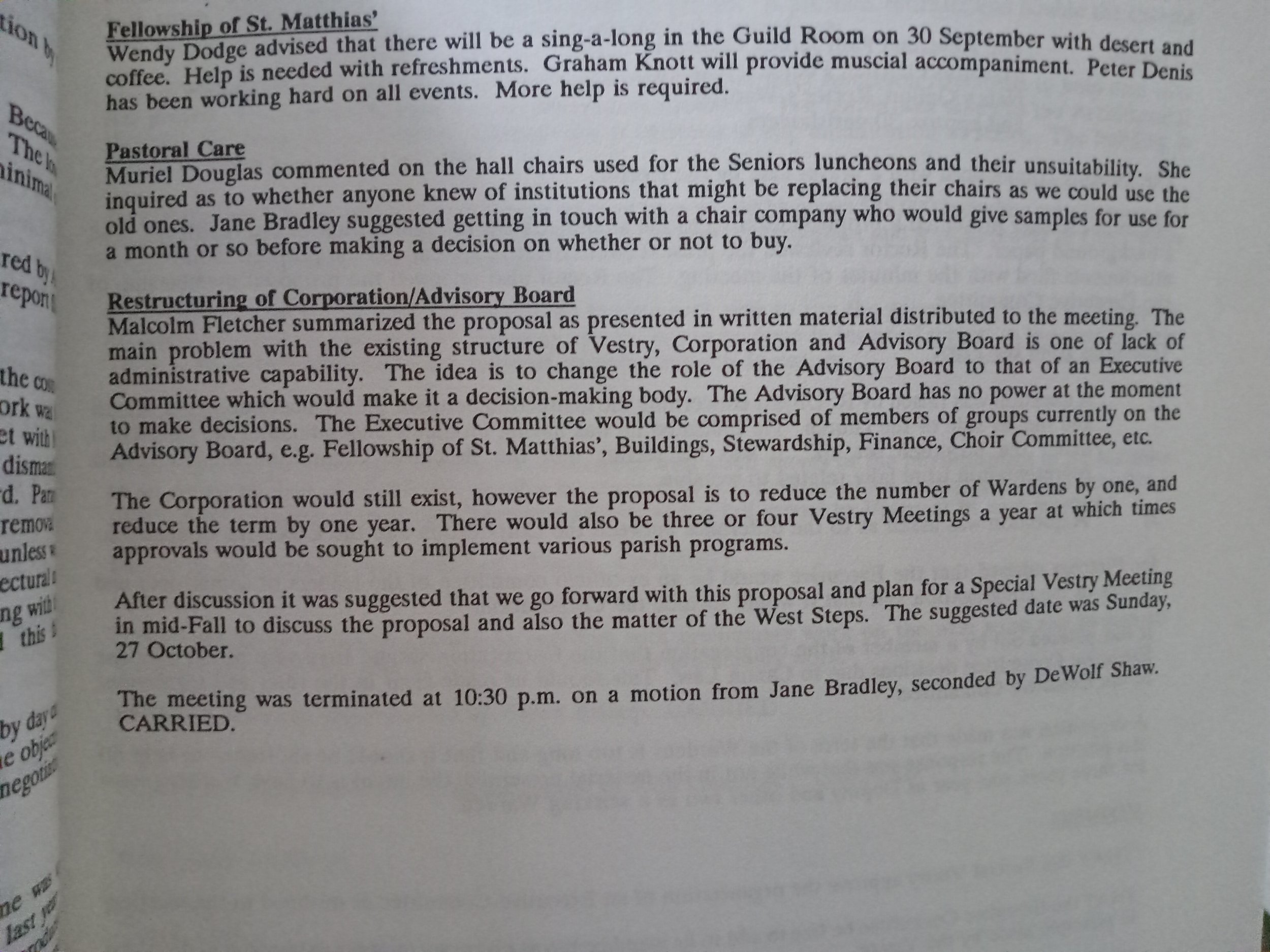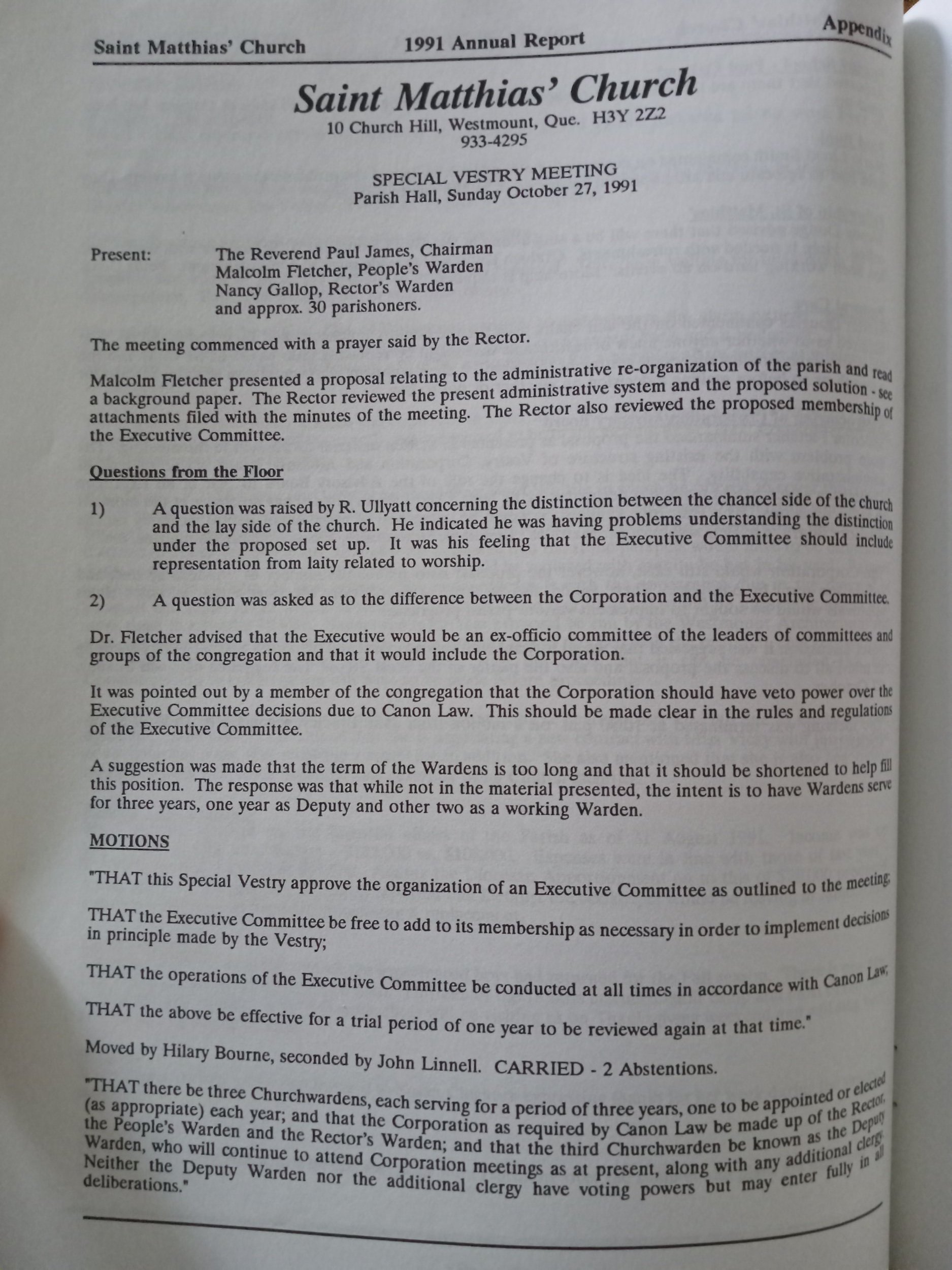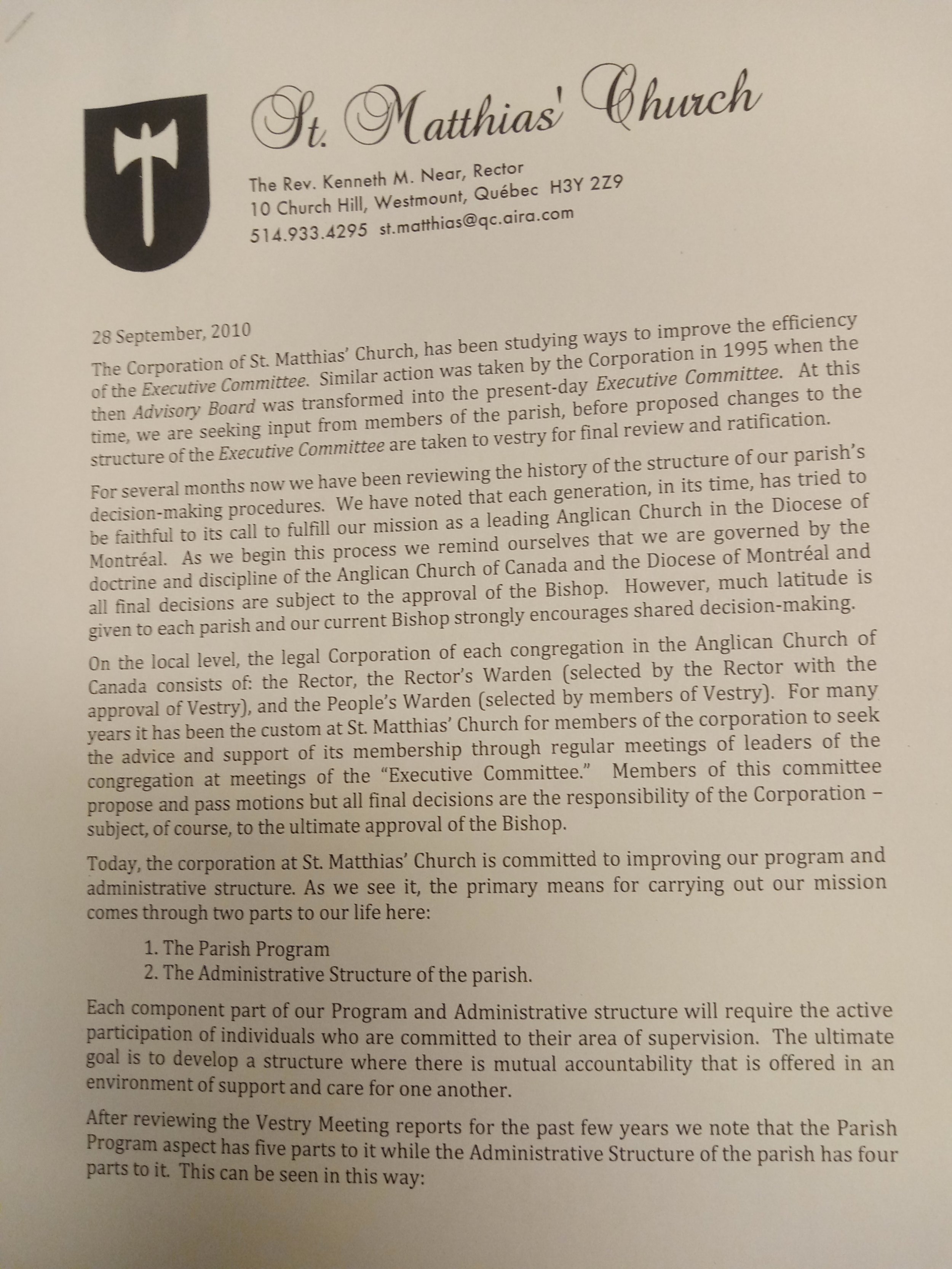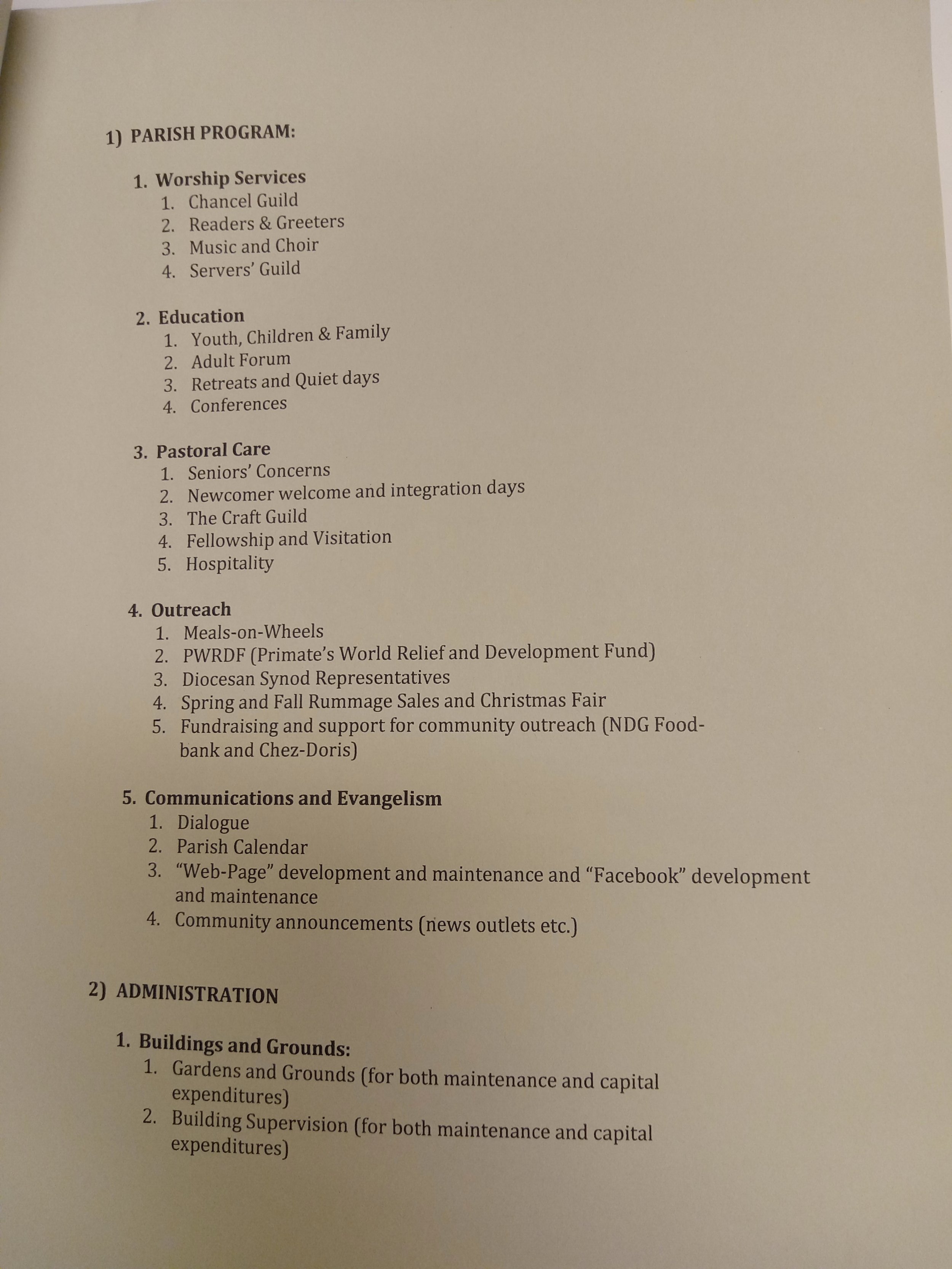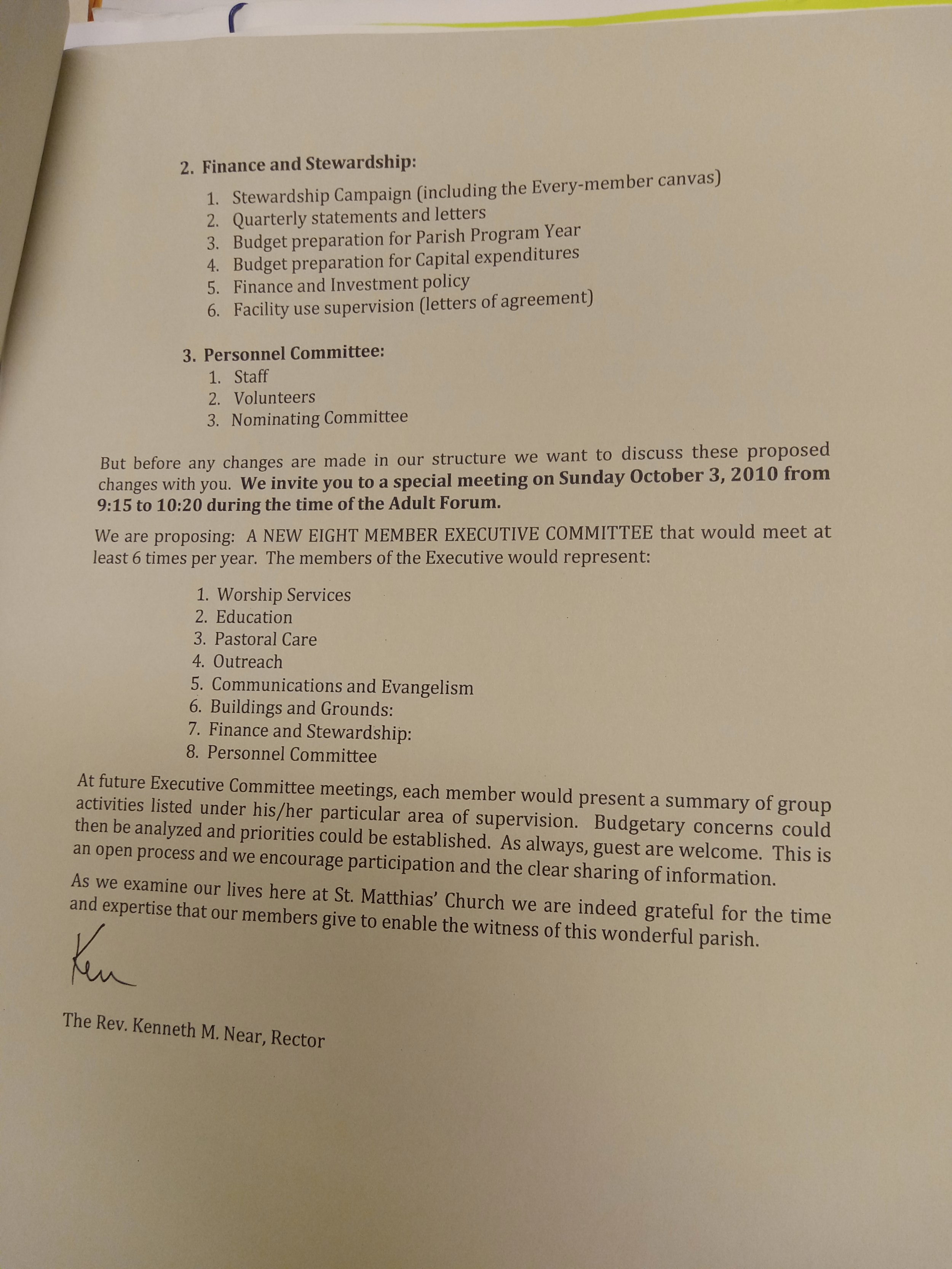August 6th: Meetings
St. Matthias’ was officially founded as a mission of St. George’s, Place du Canada, in 1873, which means our community is 150 this year! For the next 12 months, we’ll be diving into the archives to shine the spotlight on particularly interesting parts of our history.
A little later this month, St. Matthias’ Parish Executive Committee will meet for its third quarterly meeting of 2023, the first to be held in person since 2019. Moving to Zoom was only the most recent of the many changes this august body has undergone – which we are free to do, since the Canons of the Diocese of Montreal make advisory bodies like it entirely optional.
The situation in the Diocese of Montreal is uncommon. The Diocese of Toronto requires that a Parish Advisory Board – consisting of at least the Rector, Wardens, Treasurer, the Lay Delegate to Synod, and at minimum two other members of the parish elected at Vestry – receive quarterly budget updates and advise on the annual budget before Vestry, make recommendations to the Rector and Wardens, and anything else Vestry sees fit to allocate to it. The Diocese of Fredericton calls for a Parish Advisory Committee to be composed of the Wardens, a member of the parish they appoint, and two members of the parish elected at Vestry; they are responsible largely for creating the parish profile and managing issues of staffing. The Diocese of British Columbia calls for Parish Councils to advise on policy decisions; the composition of the council is left open (up to twelve members!), but the Diocese recommends monthly meetings to receive reports from the Rector and Wardens and any committees. In comparison, we are quite free to do as we like!
Our archives don’t tell us when St. Matthias’ established a Parish Advisory Board, but by the 1940s it had swollen in size to a membership of about 50, although many of those did not come to meetings. An agenda from December 1949 tells us that the Board concerned itself with things like insurance, staff sickness, preparations for Vestry, the Rector’s travel, and, of course, the parish finances. The notice of meeting shows that the previous meeting had been in May 1949, meaning that the Board, while involved in nearly every aspect of the church’s administrative life, was not exactly active. More likely, the subcommittees took on the responsibilities of managing the day-to-day, and the Board performed more of an oversight role, as Boards are wont to do. A 1952 agenda suggests that the Board was also involved in planning events like the 75th anniversary.
In 1972, faced with demands by the Association of Women to be allowed proportional representation, St. Matthias’ launched a Parish Council, which would be composed of Wardens, Rector, and a representative of each parish organisation. This body was intended to supplement the now-unwieldy Board with something a little more agile that could handle the day-to-day. By 1974, however, the Council was not meeting as often as it needed to be efficient, and it was phased out later that year. In 1976, Vestry attacked the Board head-on, reducing it to 40 members (including the heads of all organisations) in a two-year rotation so that the composition of the Board would change by half every year; this newly-organised Board would meet quarterly starting in 1978.
This state of affairs lasted until 1991, when the Board considered its transformation to an Executive Committee that could have more administrative capacity. Part of this proposal was moving from two main Wardens and two Deputies to just the two required by canon law with a single Deputy-in-training, and increasing the number of Vestry meetings so that the whole parish could have more visibility on ongoing affairs. A Special Vestry in October 1991 approved this new format, and the parish was off.
It was in 2010 that the Parish Executive Committee finally took on a slimmer shape: rather than be formed of representatives from all parish organisations, there would be eight umbrella categories and thus eight representatives. The six finance sub-committees or responsible people would be represented by one Finance & Stewardship voice; the Chancel Guild, Readers, Greeters, Servers, and Music would be represented by one Worship Services voice. Although the organisation has not survived to the present day, the limited size of the Executive has. Perhaps due to our smaller size as a parish, we are able to have a small Executive that is once again composed of the chairs of all parish committees, the Wardens, and the Rector. It can be difficult enough to find a time that all members of the Executive can meet – we all say a fervent prayer of thanks that we are no longer managing the schedules of 50+!


